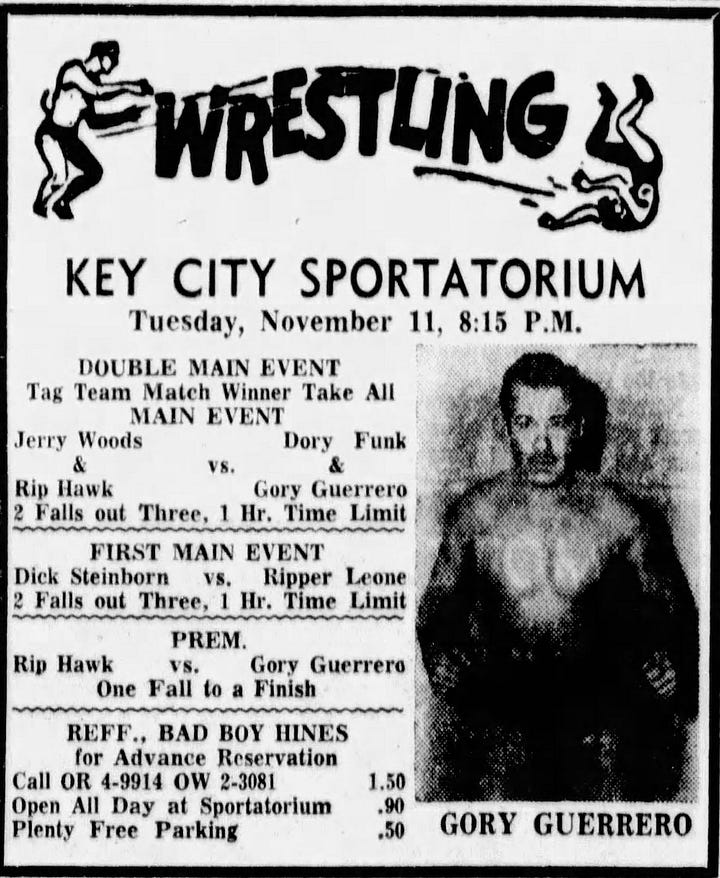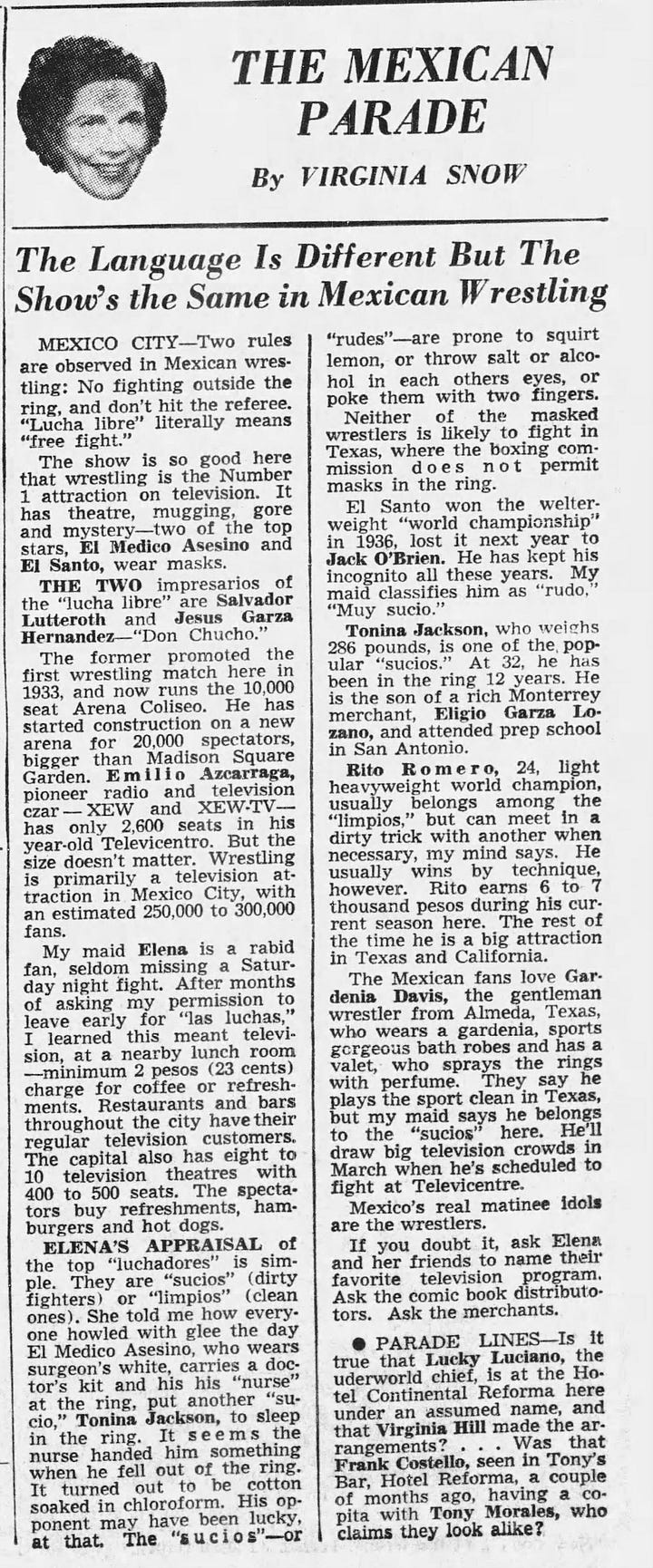90 Years of CMLL: 1950's
Santo and Blue Demon are rivals, Lucha Libre is the main TV attraction in Mexico and EMLL establishes the current day Arena Mexico.
It’s 1933 in Mexico City and the promotion that would come to be known as CMLL begins as EMLL (Empresa Mexicana de Lucha Libre). Fast forward to 2023 and the company produces a series of videos commemorating their 90th anniversary. These are their highlighted moments and images celebrated throughout the series along with a few extra notes that I found interesting.
Watch the full CMLL produced series with this YouTube Playlist. I’ve linked to Luchawiki profiles as well as LuchaDB throughout to help people learn more about these important figures in lucha libre history.
(Note: I’d recommend opening this in a web browser so you can see all the images. There are a lot of really interesting ones.)
Don’t miss the bonus notes section at the end, it’s full of lots of interesting history! A fascinating decade in wrestling history.
1950’s
1950: Lucha Libre becomes one of the main attractions with Mexico entering the commercial TV era. The first wrestling broadcasts from Arena Coliseo air Fridays at 8:30 PM. The new medium showcased Blue Demon, El Santo, Gori Guerrero, Enrique Llanes, and Cavernario Galindo.
1951: Firpo Segura unmasks Demonio Rojo at Arena Coliseo (May 13).
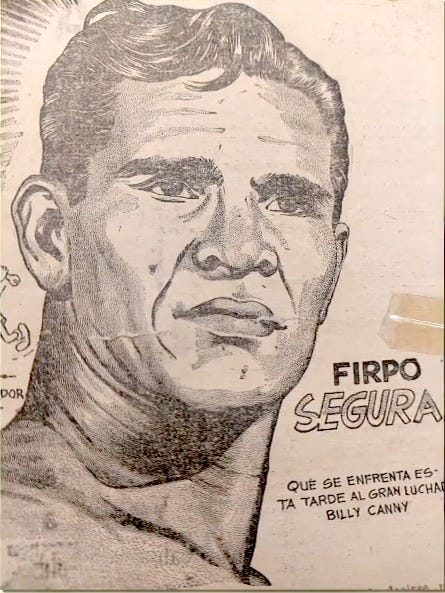

1952: Santo defeats Bobby Bonales for the NWA World Middleweight Title at the 19th Anniversary Show.
1953: In the first wrestling event at the Torreón Bullring (Apr. 22), Tarzan López and Gori Guerrero give a great battle in the Main Event. The event marks national expansion for EMLL. The first luchador film, La Bestia Magnífica (The Magnificent Beast), is released (May 22).
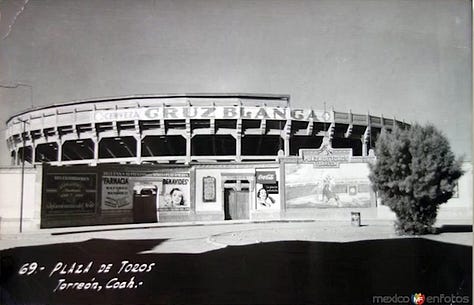


1954: NWA World Heavyweight Champion Lou Thesz defeats Gori Guerrero at Arena Coliseo. The final event at the Old Arena México is held (Oct. 7) with Enrique Llanes defeating Sugi Sito in the last match.
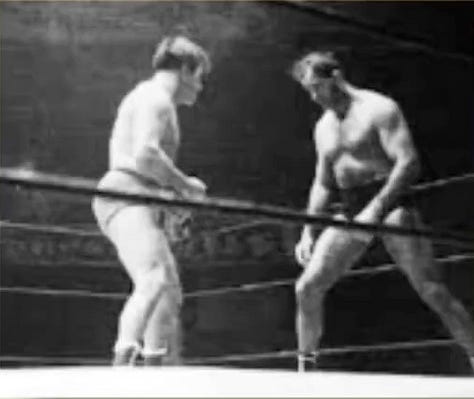


1955: The first event at the Arena Coliseo in Monterrey attracts a capacity crowd of nearly 6,000 fans for Santo against Black Shadow in the main event.
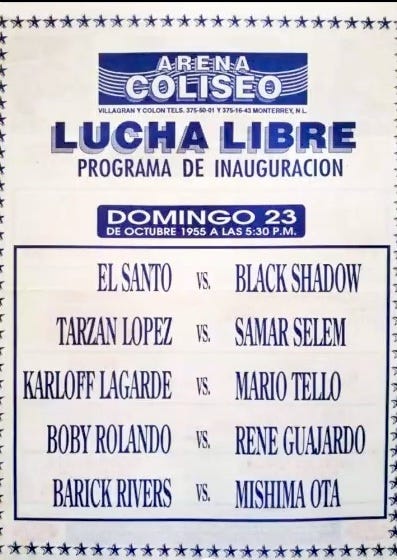
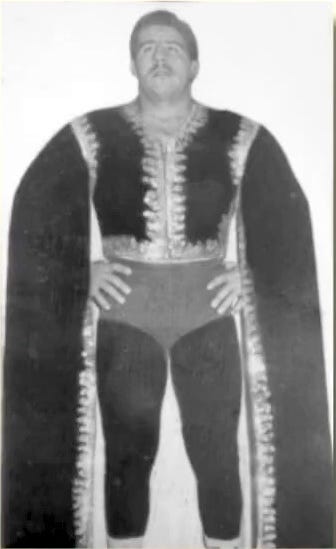
1956: The current Arena México opens its doors with wrestling (Apr. 27) and El Santo and Medico Asesino defeat Blue Demon and Rolando Vera. The Cathedral of Lucha Libre is born.


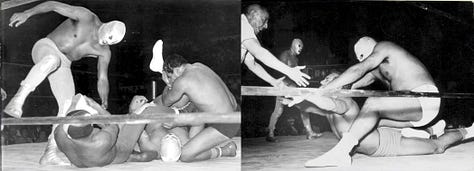
1957: Arena Coliseo hosts a bizarre Beard vs. Beard match as Gorila Macías III triumphs over Iván el Terrible (Jul. 14). To celebrate the 24th Anniversary, a high-profile tag team tournament offers a 10,000 peso prize, a fortune at the time. The legendary Black Shadow and Alex Romano win the prize.


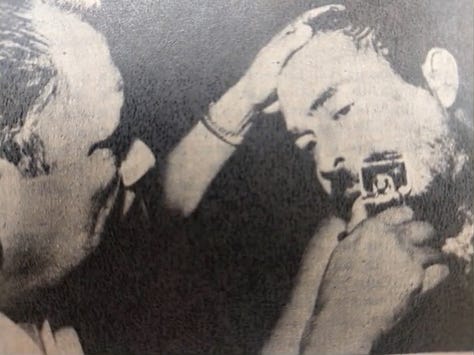
1958: El Espectro unmasks Torbellino Blanco during the 25th Anniversary Show and Rolando Vera successfully defends the World Middleweight Title against the Black Shadow. Arena México was packed beyond its 5,000 capacity.


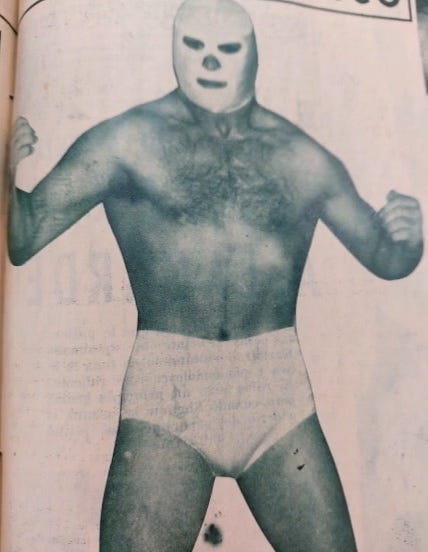
1959: EMLL establishes another new venue, Arena Coliseo del Occidente in Guadalajara, its largest provincial venue. The debut show (Jun. 21) is headlined by Blue Demon versus El Espectro. At a later date at Arena Mexico, El Espectro unmasks himself voluntarily and retires in an unprecedented event after being forced out of the ring due to injury. Espectro was known as El Hombre Verde (The Green Man).
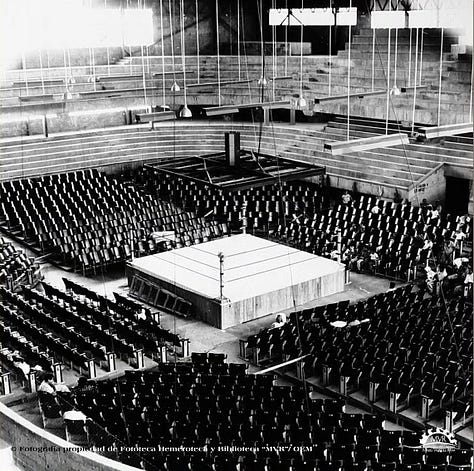
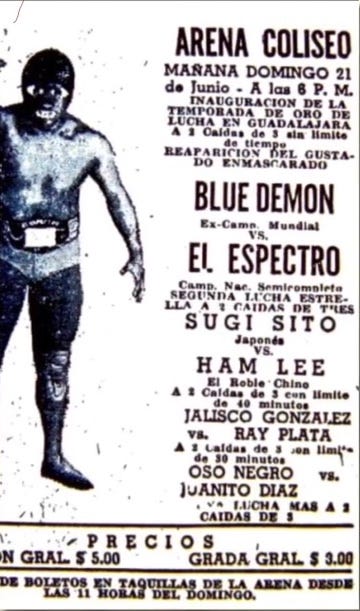
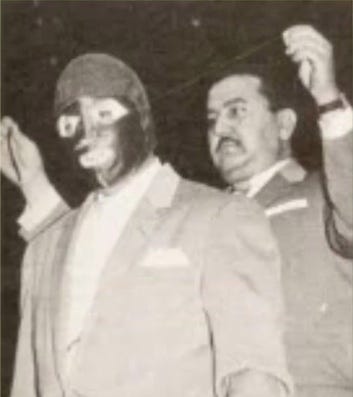
Up next, the 1960’s produces another legend - Mil Mascaras.
Bonus Notes
As part of the TV boom, Santo’s character is marketed in comics and merchandise. He films his first movie in 1958. In US newspapers he’s referred to as a ‘national hero’ and ‘Mexico’s Batman.’
Based on the results available, two out of three falls becomes commonplace. Santo remains the headline attraction throughout the decade with Black Shadow and Blue Demon as his main rivals. Shadow and Demon are billed as brothers although they weren’t in real life. Santo unmasks Black Shadow (Alejandro Cruz Ortiz) in 1952 and Blue Demon seeks revenge. That leads to big money matches with La Pareja Atómica (Santo & Gori Guerrero) against Los Hermanos Shadow (Blue Demon & Black Shadow). Demon takes the NWA Welterweight Title from Santo in 1953 in one of the most important matches of his career. Demon falls out with the promotion in the 1960’s. He becomes the second biggest mainstream lucha star outside of El Santo, co-starring in many movies with him.
Gori Guerrero and Cavernario Galindo popularize bloodbaths in lucha libre in their feud. It ties into the Santo/Shadow feud as La Pareja Atomica headline many shows against Shadow and Galindo. In the 50’s, Gori pops up more in U.S. results including Wrestling From Hollywood TV, and regular shots in Dory Funk’s Amarillo territory among others. A 1952 El Paso article describes Guerrero as “the handsome larruper” and a “smooth operator” in the ring.
Upset over their payoffs, Enrique Llanes and Wolf Ruvinskis leave the promotion, use Ruvinskis connections to get TV from Televicentro (now Televisa) and bring in promoter Jesús "Chucho" Garza Hernández. They start Luchas of Televicentro which features an eccentric mix of old-school wrestlers and outlandish gimmicks. LuchaWiki describes it as what Antonio Pena did with AAA in 1992 but 40 years earlier. They film matches at Estudio A. Shown in 1952, makes it one of the earliest studio wrestling shows in the world. It comes to a sad end in 1955 when wrestling is banned from television due to it being harmful for children. One of the top stars, Médico Asesino, is such a phenomenon that he’s taken into EMLL for a string of big matches. He’d alsohave big drawing feuds in Texas. Sadly, he passes away in 1960 of cancer at just 39.
In addition to lucha being banned from television in 1955, women’s wrestling is banned completely in Mexico City by the mayor.
Rolando Vera became an expert in submission wrestling after Rito Romero took liberties with him in a match. Vera turned into a top trainer with Blue Demon among his students. Vera passes away in 2001 and is considered a legend in Monterrey where he was their first local star. In the late 50’s, Vera holds the NWA World Middleweight champion for four years when it was considered the top prize in lucha libre. He drops it to his student, Rene Guajardo, in 1960.
El Espectro adapts his gimmick from "Los Espectros de Ultratumba" (Spectres from Beyond the Grave) and gains popularity coming to the ring in a coffin carried by two men dressed as ghosts. However, Mexico City commission won’t let him do it on their shows. He trains his nephew who has great success with the gimmick as Espectro Jr. In current CMLL, Difunto uses a variation of this gimmick. Another nephew of Espectro is future AAA promoter, Antonio Pena who also wrestled under the Espectro Jr. moniker for a time.
Salvador Lutteroth appears in US newspapers throughout the 50s. In 1952, it’s news that EMLL is accepted into the NWA. In 1957, he’s nominated as second VP of the NWA behind Sam Muchnick and Frank Tunney.
A Febraury 8, 1953 article by Virginia Snow sheds a lot of light on the lucha libre scene at the time. Snow writes from Mexico City that wrestlers are the new matinee idols as wrestling is the number one TV attraction. El Medico Asesino and El Santo are the top two stars. It’s estimated that wrestling is seen by 250-300k fans on TV in Mexico City alone. Lucha is so popular on TV that restaurants and bars throughout the city have regular customers to watch it. Mexico City opens 8-10 “television theatres” with 400-500 seats to view the shows. There are dirty fighters and clean ones. Everyone howled in glee when Medico put an opponent to sleep with chloroform. El Medico and El Santo’s comic books sell an estimated 130,000 copies on newsstands, more than Donald Duck. Merchants sell thousands of masks, kits, key rings, photos, and other merchandise. Rito Romero is said to earn between 6-7K pesos when he’s in town but spends most of his time wrestling in Texas and California. The fans love exotico Gardenia Davis.
